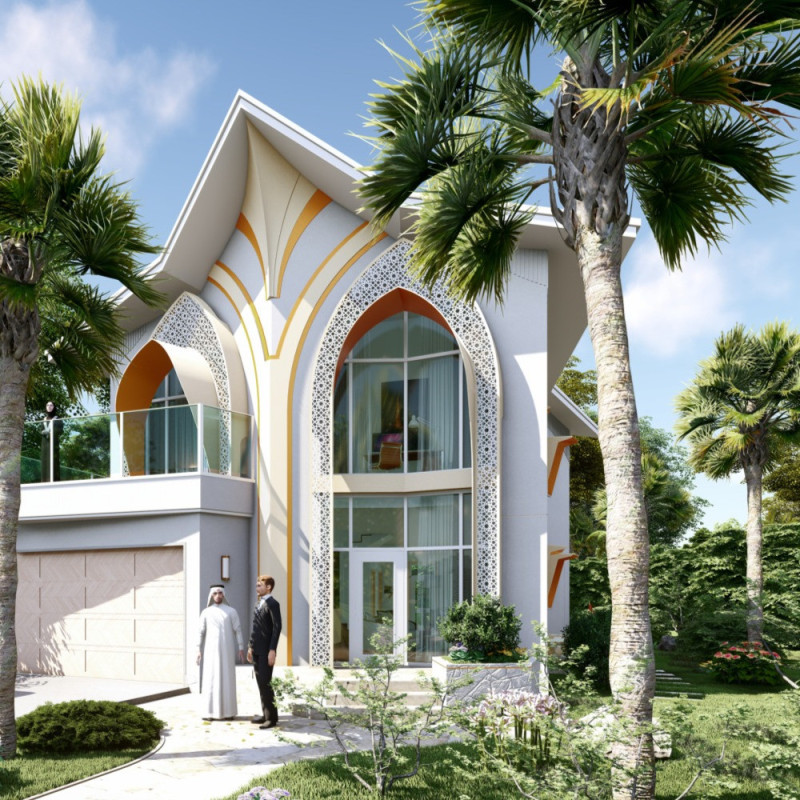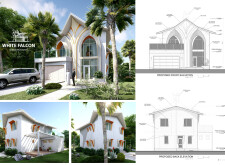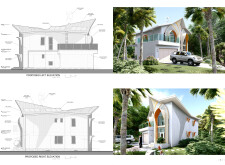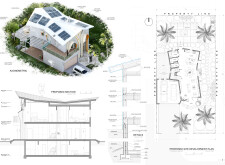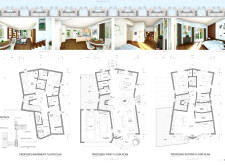5 key facts about this project
### Overview
Located within a tropical landscape, the White Falcon Passive House stands out as a residential structure designed with a focus on sustainability, aesthetics, and functionality. The project embraces passive house principles, ensuring energy efficiency while promoting a harmonious relationship with its natural surroundings. The design integrates local materials and emphasizes the use of natural light and ventilation to optimize the living experience.
### Spatial Strategy
The architectural composition features a dynamic geometric form characterized by sloping roofs and arched openings. These design elements draw inspiration from traditional Middle Eastern architecture, yet they are modernized to enhance thermal regulation and ventilation. The interior is organized across multiple levels, with a basement level dedicated to utility and recreation, an open-plan first floor that fosters social connectivity, and a second floor that hosts bedrooms positioned to capture views and natural light. Large windows and sliding doors create a strong connection between indoor and outdoor spaces, promoting a seamless flow of air and light.
### Materiality and Sustainability
The material selection reflects both aesthetic considerations and environmental performance. A light-colored stucco cladding serves as the primary finish, effectively contributing to thermal insulation and minimizing heat absorption. Complementing this are decorative screens that provide shade and ventilation, alongside solar panels and a vertical wind turbine integrated into the roof design to enhance renewable energy use. The application of a heat-reflective finish further reduces heat gain, supporting the passive design strategy. Landscaping surrounding the property utilizes local flora to strengthen ecological integration while providing natural shading and outdoor living spaces. The design adheres to passive house standards, achieving high levels of insulation and airtightness, which results in minimal energy consumption for heating and cooling.


